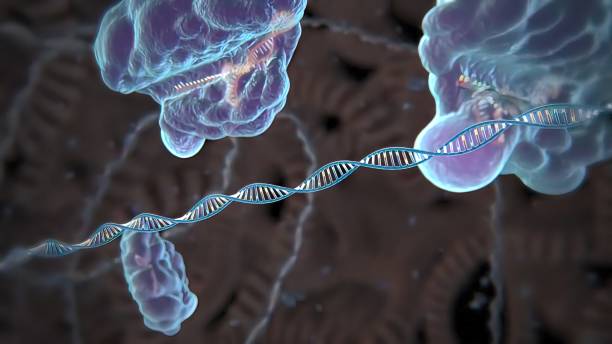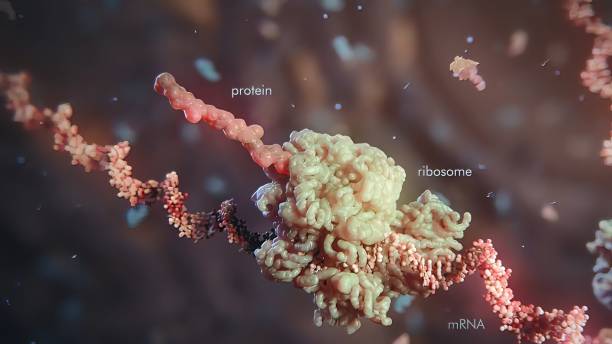
Proteomics And Genomics: Understanding Cilia-Related Developmental Disorders
Proteomics and genomics have revolutionized our understanding of cilia-related developmental disorders. Cilia are important for many cell functions, so when they don’t function properly it can cause a diverse range of diseases. In this article we will explore how proteomics and genomics research is helping us to better understand these disorders.
The human body contains millions of different proteins that carry out essential cellular processes within the cells. Proteomic studies allow us to identify specific proteins associated with certain pathological conditions such as cilia-related developmental disorders. This type of analysis helps scientists to gain insights into the underlying molecular mechanisms of disease progression and potential therapeutic strategies for treatment.
Genomic studies also offer valuable insight into the genetic basis for cilia-related developmental disorders by identifying gene mutations or variations in gene expression patterns that underlie these diseases. Through further investigation into these genomic changes, researchers may be able to determine novel targets for therapies or interventions to help individuals suffering from cilia-related developmental disorders.
Overview Of Cilia-Related Developmental Disorders
Cilia-related developmental disorders, which are also known as ciliopathies, affect approximately 1 in 10,000 people. They cause a wide range of health problems including vision and hearing loss, kidney abnormalities, and heart defects. Understanding these conditions is essential for the development of potential treatments.
Research into ciliopathy has focused on two major areas: proteomics and genomics. Proteomics studies proteins expressed by different tissues while genomics looks at changes in gene expression that may be related to specific diseases or conditions. By combining both approaches it is possible to gain an understanding of how genetic mutations affect protein production and ultimately lead to disease states. This knowledge can then inform diagnosis and treatment plans for individuals with cilia-related developmental disorders.
Role Of Proteomics And Genomics In Diagnosis

As the old adage goes: “prevention is better than cure”; by understanding cilia-related developmental disorders through proteomics and genomics, we can attempt to diagnose it at an early stage. Proteomics and genomics are two powerful tools that enable us to uncover insights into the molecular basis of these disorders.
Proteomics offers a comprehensive analysis of proteins expressed in the body, allowing us to understand how different protein components interact with each other during development. By analyzing gene expression patterns from patients’ cells or tissues, this technology helps characterize genetic abnormalities associated with cilia-related diseases.
Genomic research also allows for direct sequencing of DNA isolated from patient samples. This technique provides important information about alterations in genes linked to cilia-related conditions as well as polymorphisms that could be involved in disease susceptibility or progression.
By combining both technologies—proteomics and genomics—we can gain greater insight into biological processes underlying cilia-related developmental disorders and develop more accurate diagnostic tests for early detection and intervention. With improved diagnosis come more targeted treatments which provide hope for those affected by such debilitating conditions.
Potential Treatment Options
With the understanding of proteomics and genomics, new potential treatments for cilia-related developmental disorders have been proposed. Gene therapy is one treatment option that has been studied, as it can be used to replace a mutated gene with a healthy copy, or silence problem genes.
However, this approach requires further research before it can be applied in clinical settings. Targeted therapies are also being investigated, which involve manipulating specific pathways related to genetic mutations. Furthermore, drug therapies are being explored in order to target certain cellular processes associated with the disorder.
At present, there is no definite cure for cilia-related developmental disorders; however, ongoing research into potential treatments offers hope for better outcomes in the future. As research continues to progress, scientists may find more effective strategies for treating these conditions.
Conclusion
In conclusion, proteomics and genomics are invaluable tools for understanding cilia-related developmental disorders. By examining the proteins and genes involved in these conditions, scientists can gain a better picture of their underlying causes. This research may lead to new treatments or even cures for people affected by diseases like Joubert Syndrome, Meckel Gruber Syndrome, and other related disorders.
One particularly interesting statistic is that currently over 1/3 of all known ciliopathies have been linked with mutations in specific genes. With such a high percentage linked to genetics, it’s clear that studying gene expression levels could be hugely beneficial when diagnosing these cases. We now know much more about how different genetic variations can affect disease severity than we did before the advent of proteomics and genomics technology.
Overall, this research has enabled us to make huge strides in our understanding of cilia-related developmental disorders. As researchers continue to use proteomic and genomic data to inform their work, there is real potential for improving diagnosis accuracy as well as discovering novel treatment options for those living with ciliopathy-based symptoms.
